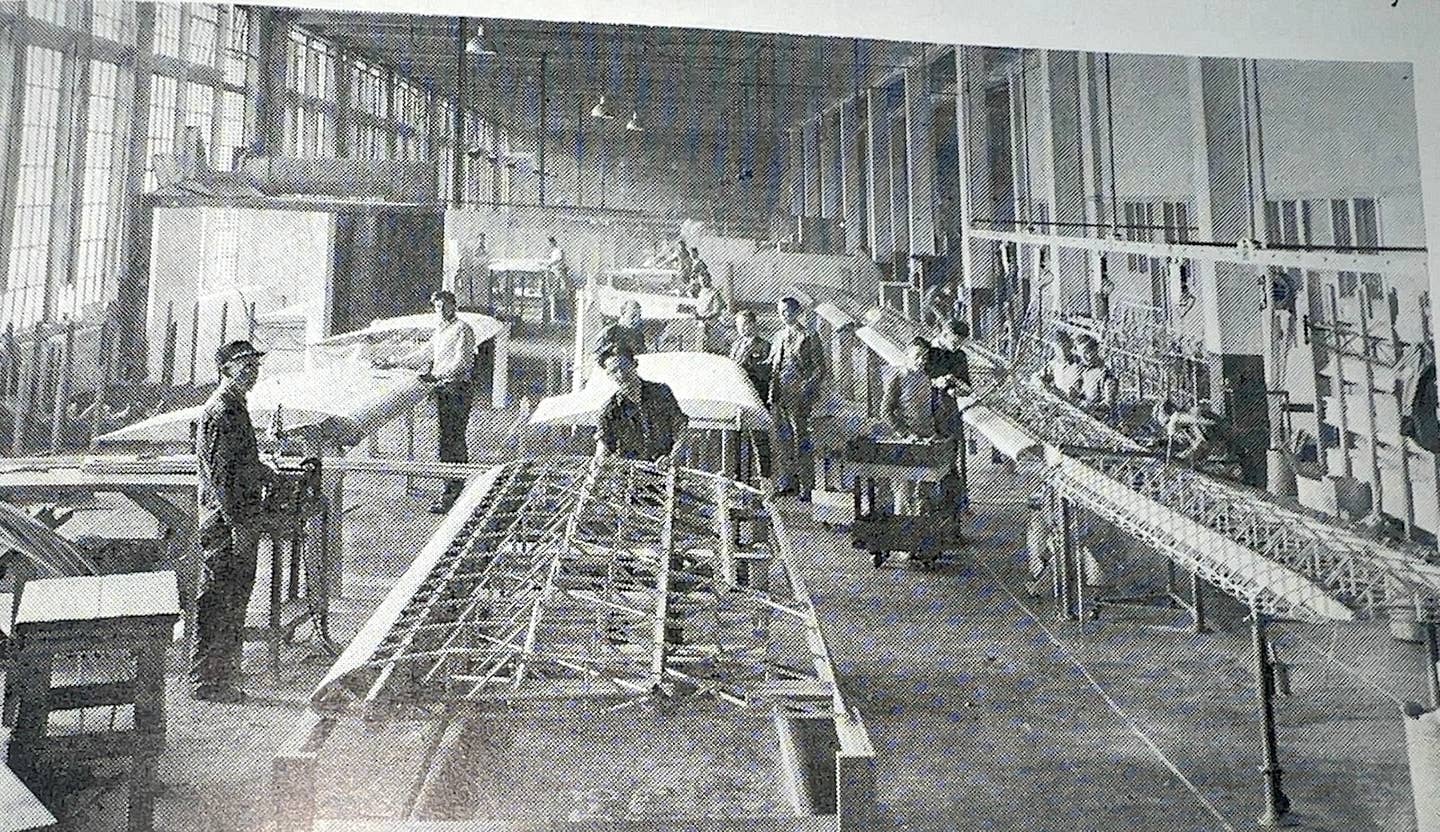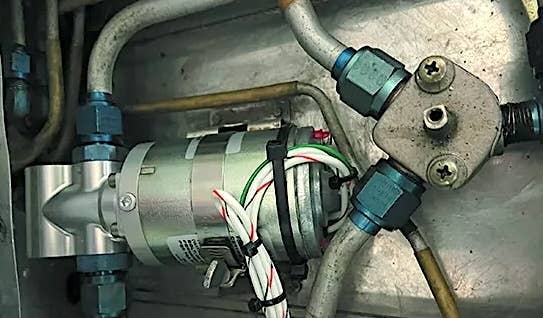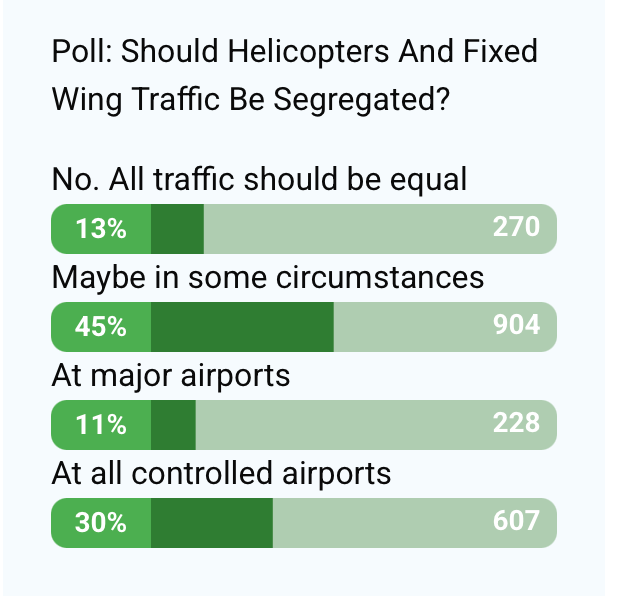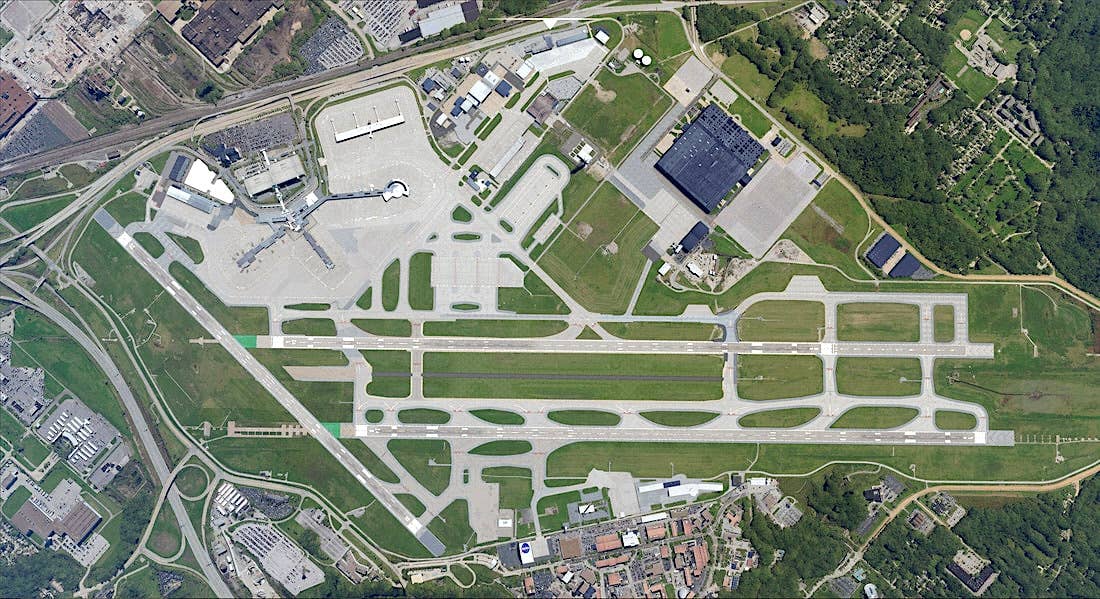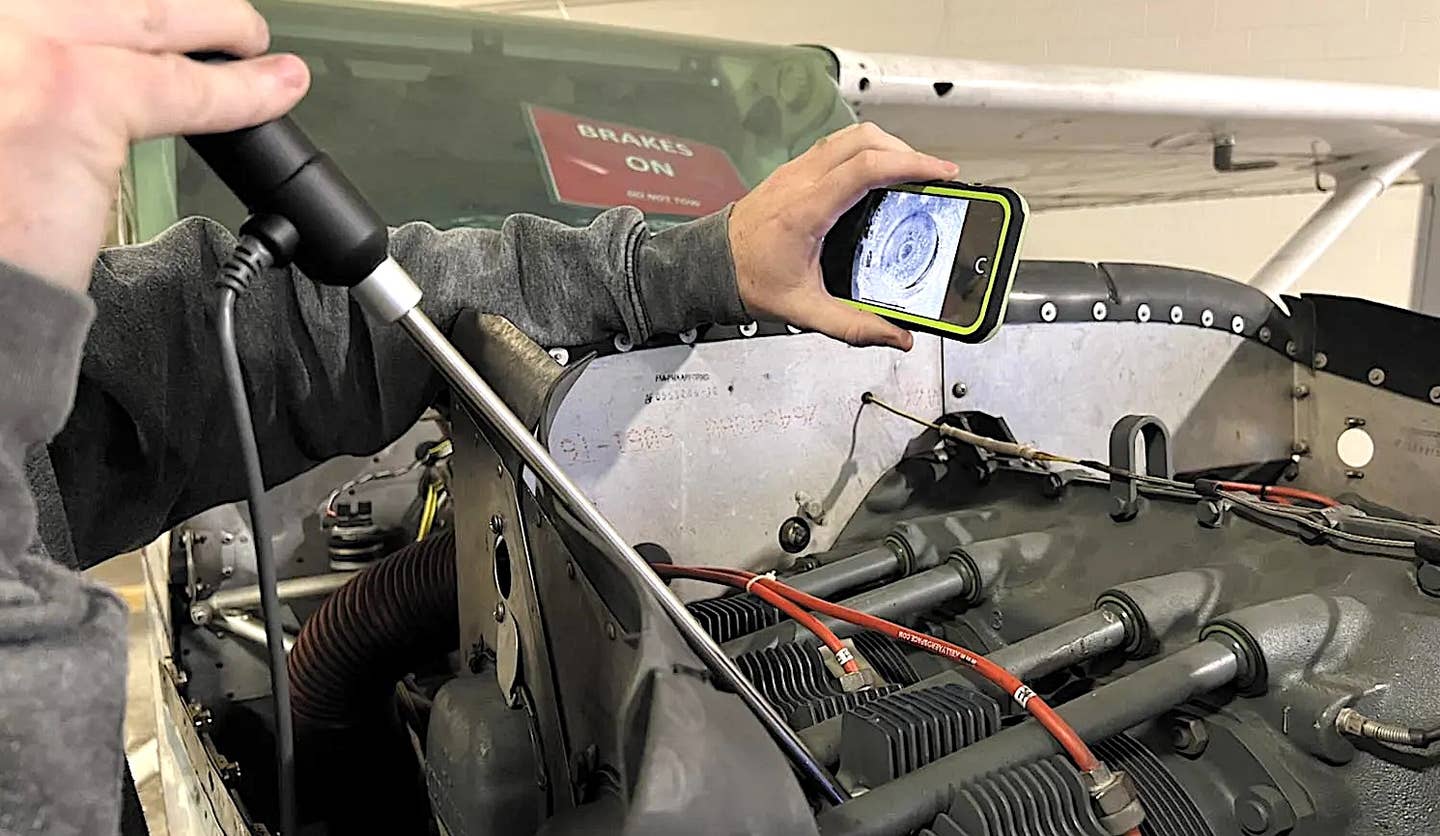Charlie Summers
Charlie Summers jokes that it takes two medical examiners for his exam — each looks into one of his ears and if they can see one another he passes. Charlie flies a one-of-a-kind armor-plated T-28 into thunderstorms — on purpose, for a living — for the South Dakota School of Mines and Technology Institute of Atmospheric Sciences. In this month’s Profile AVweb’s Joe Godfrey talks with Charlie about the program, the airplane and what we can learn from the inside of a level-six cell.
Charlie Summers jokes that it takes two medical examiners for his exam -- each looks into one of his ears and if they can see one another he passes. Charlie flies a one-of-a-kind armor-plated T-28 into thunderstorms -- on purpose, for a living -- for the South Dakota School of Mines and Technology Institute of Atmospheric Sciences. In this month's Profile AVweb's Joe Godfrey talks with Charlie about the program, the airplane and what we can learn from the inside of a level-six cell.
Charles Melvin Summers was born August 21, 1935, in Hershey, Nebraska. As he grew up on the family farm he kept an eye on airplanes in the sky, and started flying as a sophomore at the University of Nebraska. Air Force ROTC helped him build time, and he graduated with a commercial pilot certificate. He flew F-100 Super Sabres for three tours on Vietnam, then switched to F-4s and became a Wing Commander in Korea. He spent 24 years in the Air Force flying fighters. Charlie's wife was an Air Force nurse and when Charlie retired, she didn't. As she got transferred from base to base, Charlie stayed busy flying corporate trips, charters, and flight instruction. Eventually they landed in Rapid City, South Dakota, at Ellsworth AFB. Like most of us, Charlie had spent most of his flying career trying to avoid thunderstorms. He had inadvertently flown into one flying formation in F-100s over New Mexico, which resulted in a midair collision. Both airplanes got back on the ground safely, but Charlie got the message loud and clear: Thunderstorms are bad -- stay away from them.
Then one day he met Dan Custus. Dan was also a retired Air Force pilot who flew a T-28 into thunderstorms as part of a research project for the South Dakota School of Mines and Technology Institute of Atmospheric Sciences. Dan needed a relief pilot with T-28 time who lived in western South Dakota, and everything pointed to Charlie. The T-28 had already been flying through thunderstorms for 15 years, and Charlie figured if the airplane could make it, he could too. He flew his first mission about ten years ago, and now two other pilots have joined the team. One of his teammates, Tom Warner, contributed the pictures for this Profile. You can see more of his work at Tom's website. If you think you'd like to join the team, you'll need some T-28 time, and even then you might need to wait a while. Charlie's closing in on 68, runs marathons to stay fit, and plans to keep flying. He's giving instruction and checkrides in single- and multi-engine airplanes, helicopters, gyroplanes and gliders and he's restoring a Schweitzer 220-C. He's also an A&P-IA.
Thanks to Doug Ranz for suggesting Tom Warner, and thanks to Tom Warner pictures and for suggesting Charlie.
How did you get interested in flying?
I grew up on a farm so I knew machinery and I knew farm work, and I knew I wanted to do something that wasn't that hard. Every airplane that flew over made me think, 'Now, that guy's not working as hard as I am down here.' I started flying in my sophomore year at the University of Nebraska, joined the Air Force ROTC, and by the time I had graduated I had a commercial pilot rating. Once I joined the Air Force it quickly got my attention that they fly a little more precisely that I had as a commercial civilian pilot, and I adjusted and spent 24 years in the Air Force as a fighter pilot.
Which airplanes did you fly?
After Air Force pilot training I went to F-100s and I flew them for a long, long time -- three tours in Vietnam -- then I got some time in the F-4. I was wing commander in Korea, then I retired from the Air Force to go back to flying. My wife was still in the Air Force -- she's an Air Force nurse, retired now. I followed her around for awhile, so I flew in Florida, Alabama, and Mississippi before she retired. I flew mostly corporate and some flight training, just a little bit of everything, and then she got assigned to Ellsworth Air Force Base in Rapid City. She liked it here, so she retired here and she let me stay with her.
Did you fly in rough weather in the Air Force?
I had a midair collision flying fighters. I was in a thunderstorm, so I guess that was my first introduction to 'thunderstorms are bad; stay away from them.' I had to fly two airplanes out of Cannon Air Force Base, New Mexico, and at that time the F-100 had no on-board radar. We were being vectored by our radar, and they vectored us right into a thunderstorm. I lost lead, turned away, and then we hit each other. It knocked the tail off of his airplane and knocked part of the wing off the left side of mine -- fortunately, we both got the airplanes back. That was my first introduction to thunderstorms, and, at that point, my attitude was "If there's one in the county, be in the next state."
The reason I lost lead is hail started breaking things off the airplane. When I heard it I looked away for a split second to see how the engine was doing, because the compressor stalled with all the hail coming in the intake. When I looked back, we weren't together, and then -- maybe 30 seconds later -- we got back together, so that was about the only time I really had anything to do with that kind of weather.
After I retired from the Air Force I flying charter and air ambulance for a company in Rapid City, and I met a retired Air force pilot named Dan Custus. He was flying thunderstorm penetration flights and he said 'I need a little help now and then because some of the deployments are six weeks in the summertime.' It sounded like interesting work. I had flown the T-28 in the Air Force, so I was familiar with the airplane itself.
He arranged to have the job appear as an opening, and I applied. I was really the only one qualified in the airplane and that lived in the western part of South Dakota -- so essentially I signed on and learned from Dan. When he lost his medical about three years later, I went from being the number-two guy to flying it all.
When was your first thunderstorm penetration mission?
In '92. I had spent my life avoiding thunderstorms, and had that one scrape which confirmed 'Avoid 'em.' Dan walked me through the procedure, but the first time you put the pointy end of the airplane towards the thunderstorm and then go on in, my mental state was, 'This is not totally comfortable.' But this airplane's been doing it -- at that time 16 years -- and it's never failed to get out the other side, so all I have to do is fly it. The equipment is built and modified to be able to take it, so all you've got to do is fly through it. After the first couple, your confidence builds and you realize 'Yes, it will do that.'
How has the T-28 been modified?
We took a T-28-A model, which is the small -- 1200 horsepower -- engine Air Force trainer, and we put the Navy engine in it -- 1,425 horsepower. It's a Lycoming-built Pratt & Whitney 1820-86B and we swing a big three-bladed prop that the Navy uses. We had to go to the big engine to get up to altitude, because the airplane was built originally to max out at about 8,000 pounds, and we're flying it at around 9,000 pounds-- which is legal because our airplane is registered in the restricted category.
Paul MacCready [aeronautical engineer, weather researcher and Founder of Aerovironment, Inc.] was presented with the problem, 'Could you reinforce, do something, modify an airplane to get it through a thunderstorm and endure primarily the hail, lightening, and the turbulence?' and he took the task on, and what he came up with was modifications to this aircraft. What we did is we put about .0060- to .0070-thick armor plating on the leading edge of the wings, on the leading edges of the horizontal stabilizer and the vertical stabilizer, and around the cowl. The canopy is armor-plated on the top and the sides. We use a 3/4" Lexan windshield with a slant to it -- like a fighter windshield. I've had the hail pounding off the windshield so loud I couldn't even hear, so I'm not concerned about the windshield giving any ground.
We have a laser on the left wing which has a six-inch laser beam between two big pylons. I can count, sort, and evaluate hail going by, and it runs all that through the computer. When I start hearing hail impacts the laser will pick it up and my controller on the ground says, 'You're getting hail,' and I say, 'I'll confirm that.' We have smaller lasers which pick up smaller particles, right on down to the micros, and we have good temperature sensors.
We have two G-meter devices that pick up pitch and roll, so attitude data gets fed back to ground. We carry a camera on board on the right wing, and it's kind of in its infancy. It works good except when it gets iced over, and we're working on a de-icing system to keep it a little clearer.
What engine mods have you made to handle the hail?
We had trouble with the push rod covers bending the push rods from hail impact, so we armor-plated those with a little strip of armor plate. The governor was getting damaged, so we put a divider in front of it to armor-plate it. We had to put cutter bars in the air intake. We don't have any de-icing, and we really don't have any anti-icing on the airframe. We have an alcohol flinger on the prop, so it doesn't pick up much ice. The biggest problem is the engine has a normally aspirated engine, so you need carburetor heat to keep the ice out. Carburetor heat will not handle the ice.
Ice is a real problem for the engine, so we pump alcohol into the engine. We have two tanks, one for the prop alcohol and one for the carburetor, and that's one of our critical things, when we run out of alcohol. I don't think we could get through a thunderstorm because we'd get too much ice in the carburetor without that alcohol. So when the pilot has no more alcohol left he has to come home.
With all that steel, how does the airplane handle lightning?
The canopy has been struck somewhere in excess of 20 times -- you can tell because it burns a hole where it comes out. Way back in history they had an ADF antenna on top, but now all of our antennas are under the airplane, except for the GPS. I got hit two years ago in Goodland, Kansas -- a good solid strike because the canopy glowed all the way from the front to the back inside -- and I had two burn holes in the right elevator, and it didn't do anything. In that case we had airborne sensors that sense a build-up of electrical force and sensors on the ground, and they were able to see that lightning bolt coming. We didn't lose radios and it didn't affect anything, so we've static wicked it very well. I put Learjet static wicks on the ends of the wings, and we have wicks all over the airplane to try to discharge, so we fare pretty well in lightning. We do a post-lightning strike inspection to make sure that we haven't welded any bearings in the flight controls and we haven't damaged the engine, but never have we had a problem with lightning.
How do you handle up- and downdrafts?
We would over-stress the airplane if we didn't allow it to float. Our penetration speed's 140 knots. I let it go up to 150 when it gets there, but I can only come back to about 25 inches manifold pressure or the engine will cool too much. So I just set 25 and 150 and float up when it updrafts. Then we just descend till it stops descending, and that keeps the Gs off. Hardly ever do we pull more than 3 Gs, but I know the airplane would overstress if we tried to hold altitude and let the speed build too high. About four years ago we installed wingtip cameras aimed at the fuselage, and there was no wing flex at all with all that armor plating.
We do carry a parachute. I wouldn't want to bail out into a thunderstorm 'cause I have no sensors on my body -- so the mission's over. But we carry a parachute in case of structural failure, and we'd hope to get in a position where we could get out.
They're looking for a replacement for the T-28 and they can't find an airplane that they think will go through thunderstorm after thunderstorm.
It must be noisy inside a cell. Do you use noise-cancelling headsets?
No, just a helmet. We get banged around so you need a helmet to keep the lumps off your skull. Even tied in with a four-point suspension harness, you still tend to bounce around due to the turbulence.
Can you walk us through a mission?
We sit ground alert, just like a fighter on alert. You're sitting with the airplane and you're all ready to go, and we usually get in the air in about 15 minutes when cells start building. Several years ago where we launched with them just building and tried to stay with them through the build-up. Sometimes we don't launch till they're mature. We have to just sit around all day ready to go so we can try to catch 'em, and sometimes you get up there and they just poop out on you. You're ready to drive through it and they start dissipating.
We usually don't launch unless we have a Level 6 or above, because that's where we find the data we want. We plan it out. We don't just dive into one and see what happens. We have a ground controller watching weather radar, so he knows the storm very well -- it's a better display than you would get with an air traffic control radar. Our GPS track is downlinked and to display on that weather radar, so he essentially directs our flight path from our GPS track.
A thunderstorm is not usually symmetrical, but more like coarse rings on a tree stump that keep going out. As they keep going out they get less severe, so we kind of start slicing on one side of the thunderstorm and keep going deeper on each pass.
Our missions average around an hour and a half. They'd like to have us up longer, but when we go in high blower on our supercharger, we're burning 60 gallons an hour. How long we stay up usually depends on what data they're trying to gather.
It takes you about an hour to debrief your mission -- you just give a running narrative of what happened every 30 seconds and they compare that with the sensor information that they've got. I guess you could use a remote control airplane, but you wouldn't have the pilot inputs, which are sometimes pretty useful.
Does the data you're sent to gather change from mission to mission?
That has changed over the years. Initially -- since nobody's been in a thunderstorm -- they didn't exactly know what was there in terms of temperature, temperature changes, velocities of turbulence, how and when the moisture changed to hail, or if it did or didn't. Over the years we've evolved and they're looking for different things. Two years ago we flew into LPs -- nasty thunderstorms with very little precipitation. They wanted to know how this thunderstorm could be generating energy and not raining very much, so there the important thing was water content and temperatures. With the lasers we can very well nail temperatures and water content.
The biggest thing that keeps us out is ice. I've had up to three inches of ice, and when you get that much ice the airplane starts falling -- you just can't maintain altitude. In summertime thunderstorms we just let it descend, melt the ice off, and climb back up and do it again. Two years ago in a supercell I went in and told them it would be my last pass 'cause I was carrying almost at three inches of ice at I'm full power and descending. I got kicked around a little and it stopped descending. When I came out the airplane was completely clean -- the hail had knocked all the ice off the airplane. Not a recommended way to de-ice it, but it sure did the trick.
About four years ago we worked on a test for two companies that were trying to build turbulence into their radar systems. We led a Sabreliner and a Convair in trail with us -- slightly outside. They couldn't take hail or ice, and so we were kind of the Seeing Eye dog for them. We could tell them, 'We're hitting turbulence,' and then they would verify. Their airplanes had lots of computers and we were kind of there to keep them out of the ice and the hail and the lightning.
An airplane radar uses green, yellow, and red. That red area in most airborne radars is about a max of 35 dBZs reflectivity, and we'd go up to 50 to 55 dBZs -- probably double what shows as red on a scope. That's about our limit -- 60.
You would think if you flew through thunderstorms for a long time you'd have everything, but the sensors have evolved some, and the data they need is evolving, plus we're getting where we have sensors on the ground. I've flown missions with either a Citation or some airplane over the top, so we're really sensing under the storm, over the storm, and we're going through it. When you compare all that data, it gives a pretty good picture of what's going on.
Is the project looking for pilots? Or do pilots find you?
The trick is finding pilots with T-28 time. Right now our lead pilot -- who flies for Continental Airlines -- had logged a little bit of T-28 time in the Air Force. We're grooming a third pilot so we have some progression now, and he had never seen a T-28. We're not excluding civilians, it's just that we do fly some formation and the kind of instrument flying we do it seems that ex-military pilots are very well-trained for it.
Also, our airplane was built as a two-seat trainer, but we removed everything out of the back seat to put in equipment, so it's single-seat now. It's not foreign to military pilots -- especially those with fighter backgrounds -- that you go out and learn all about the airplane, then you start it up and go fly it. A lot of fighters were single-seat until they got the newer generations.
What we usually do is put out a hire notice 'cause it's a state job. We get quite a few applicants, and then we tell them what the mission really is because it just says 'weather research pilot' -- it doesn't go into too much detail. About half of them say they'd be interested, but maybe next time.
Then it kind of boils down to what experience you have flying. I understand way back in the program one of the initial pilots was not too keen on flying instruments, and he didn't last too long because he didn't really want to go in the weather. Well, that's kind of a requirement.
If it's a South Dakota project, why are you flying in Kansas and Colorado? Do they hire you?
The South Dakota School of Mines and Technology Institute of Atmospheric Sciences operates the airplane, but our project is funded by the National Science Foundation, and when we go on a project NSF pays the School of Mines to operate the airplane for "x" number of hours on their project.
This summer we may go to Norman, Oklahoma. That would be a national project that probably some government agency or NSF itself may be funding that project, and then they will pay for the participation of the T-28.
Are these projects seasonal?
It's seasonal but the airplane will have problems if I don't fly it the year round. So we're trying to fly a couple times a month in the winter just to keep everything operating and calibrated. We did have one winter project, which was to fly in ice fog, and I had to fly in trail with a King Air out of Wyoming.
We were supposed to go to Mono Lake, south of Carson City, Nevada, and that never happened 'cause they never got the fog. So we finally flew it over Cheyenne. I wouldn't do it again because I picked up so much ice with no way to get it off. I landed at pretty much full power, taxied in, and while I'm sitting there the ice melts there's an outline of the airplane on the ground. I said, 'OK, see that? We're not going to do that anymore.' We finally completed it, but winter flying is not our thing 'cause we really aren't equipped for it.
Are there other teams that you've run across that are doing thunderstormpenetration around the country?
This is the only airplane in the world that can penetrate a thunderstorm. It's one of a kind. North Dakota has a Citation that goes over the top, around the sides. NCAR [National Center for Atmospheric Research] in Denver has airplanes that go around the thunderstorms and around weather, but this is the only airplane capable of going through a thunderstorm.
We're going to do a project in Houston in two years. They wonder why there's so much lightning around oil fields, so they're going to throw us up with a lightening rod and see. We like to take our own radar with us and that radar belongs to Colorado State.
What does a guy who flies through thunderstorms do for kicks?
Fix the airplane.
A couple years ago I did a sky dive with my granddaughter 'cause I got a couple other parachute jumps, so I decided I jump and fall along with her just to prove that everything's relative -- relatives fall at the same speed.
I'm the only designated examiner for fixed wing in western South Dakota, so I fly probably anywhere from 50 to 80 flight checks a year. I do some instruction, and I have a 172 just to get around in. I do a little bit of multi-engine flying for an air ambulance company, but I don't have much time 'cause I'm rebuilding a Schweitzer 220-C model glider so I can start a soaring club in the Black Hills.


